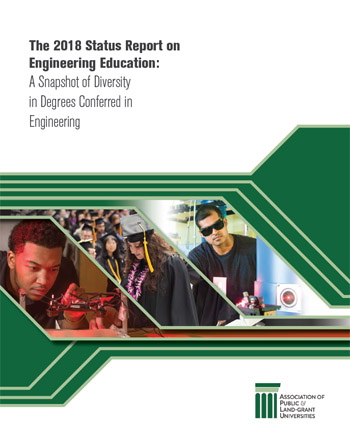2018 Status Report on Engineering Education
Thanks to funding from the National Science Foundation, this APLU report examines trends in engineering degrees conferred at national and institutional levels to determine areas of growth among various groups, changes in racial, ethnic, and gender diversity in engineering, and which colleges and universities graduate a larger number of underrepresented groups in specific engineering disciplines.
Download the Report
Download the Section Summaries
Major Findings
1. Despite large numerical increases for Hispanic and Black students, these two groups along with American Indian/Alaska Native (AIAN) and Native Hawaiian/Pacific Islander (NHPI) students remain significantly underrepresented in engineering at the undergraduate and graduate level.
2. From 2010-11 to 2015-16 there was a massive increase in Non-U.S. Resident graduates in engineering at all levels, especially master’s degree where this group is now the majority of master’s degree earners.
3. The gender disparity transcends URG and majority groups in similar ways with women earning fewer degrees than men, even though in 2015-2016, the majority of degree earners in all fields of study combined are female.
4. At the institutional level, there is a high concentration of each URG in a small number of institutions which contrast with a large number of institutions with little to no racial or ethnic diversity in their engineering programs.
5. Historically Black Colleges and Universities (HBCUs) and Hispanic Serving Institutions (HSIs) continue to play an important role in educating Black and Hispanic students in engineering.
6. States with majority-minority or emerging majority-minority college-age population are failing to educate a large enough share of their URG students in engineering.




Stay Connected
X (formerly Twitter)
Facebook
YouTube
LinkedIn
RSS